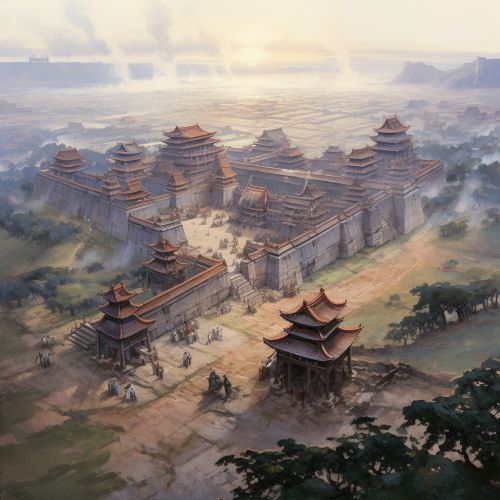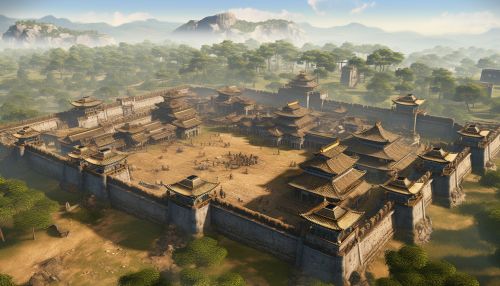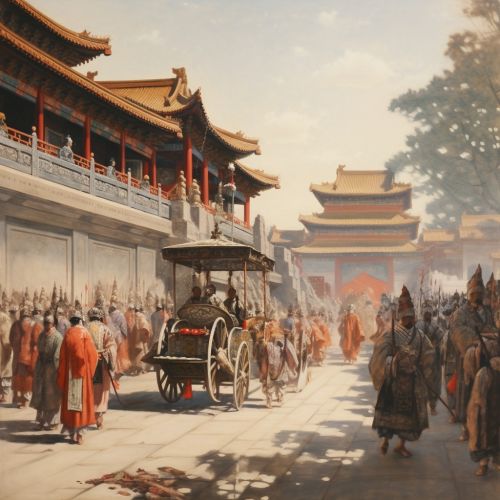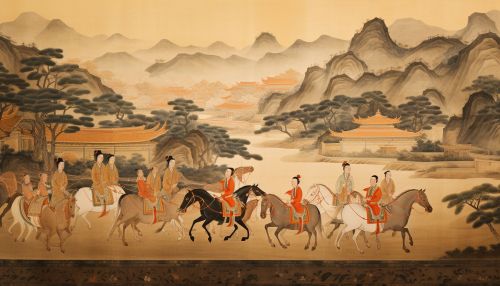History of China
Prehistoric China
The earliest known written records of the history of China date from as early as 1250 BC, from the Shang (c. 1600–1046 BC). Ancient historical texts such as the Records of the Grand Historian (c. 100 BC) and the Bamboo Annals (296 BC) describe a Xia dynasty (c. 2070–1600 BC), which had no system of writing on a durable medium, before the Shang.


Shang Dynasty
The Shang dynasty is the earliest dynasty of traditional Chinese history supported by archaeological evidence. Excavation at the Ruins of Yin (near modern-day Anyang), which has been identified as the last Shang capital, uncovered eleven major yin royal tombs and the foundations of palaces and ritual sites, containing weapons of war and remains from both animal and human sacrifices. Tens of thousands of bronze, jade, stone, bone, and ceramic artifacts have been obtained. The Anyang site has yielded the earliest known body of Chinese writing, the oracle bone script, mostly divinations inscribed on bones. These inscriptions provide critical insight into many topics from the politics, economy, and religious practices to the art and medicine of this early stage of Chinese civilization.
Zhou Dynasty
The Zhou dynasty (1046–256 BC) supplanted the Shang, and introduced the concept of the Mandate of Heaven to justify their rule. The central Zhou government began to weaken due to external and internal pressures in the 8th century BC, and the country eventually splintered into smaller states during the Spring and Autumn period. These states became independent and warred with each other in the following Warring States period. Much of traditional Chinese culture, literature and philosophy first developed during those troubled times.


Imperial China
In 221 BC, the Qin dynasty (221–206 BC) conquered the various warring states and created for itself a unified Chinese empire. The Qin dynasty was short-lived and was succeeded by the Han dynasty (206 BC – AD 220), which ruled China for four centuries. The Han dynasty was followed by a short period of conflict known as the Three Kingdoms period, which was eventually followed by the Jin dynasty. The Jin fell to civil war upon the ascension of a developmentally-disabled emperor; the Five Barbarians then invaded and ruled northern China as the Sixteen Kingdoms.


Modern China
The Qing dynasty, which lasted from 1644 until 1912, was the last imperial dynasty of China. Its conquest of the Ming (1616–1644) cost 25 million lives and the economy of China shrank drastically. After the Southern Ming ended, the further conquest of the Dzungar Khanate added Mongolia, Tibet and Xinjiang to the empire. The centralized autocracy was strengthened to suppress rebellion, and by 1661–1662, the population of China had reached 200 million. However, the Great Qing Legal Code was plagued by corruption, drugs and rebellions, and in 1912, the Xinhai Revolution established the Republic of China.


